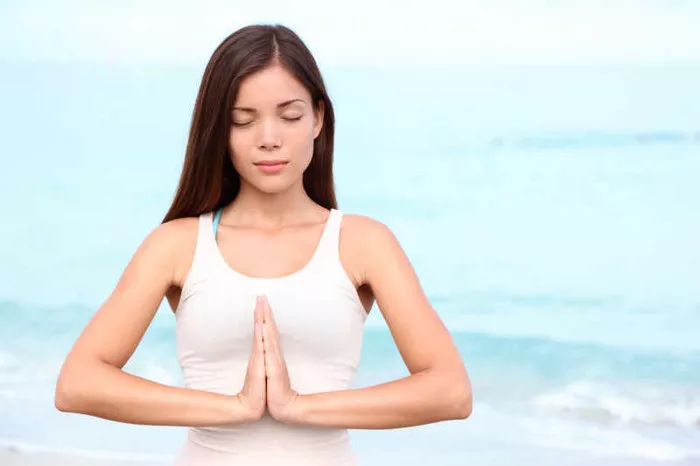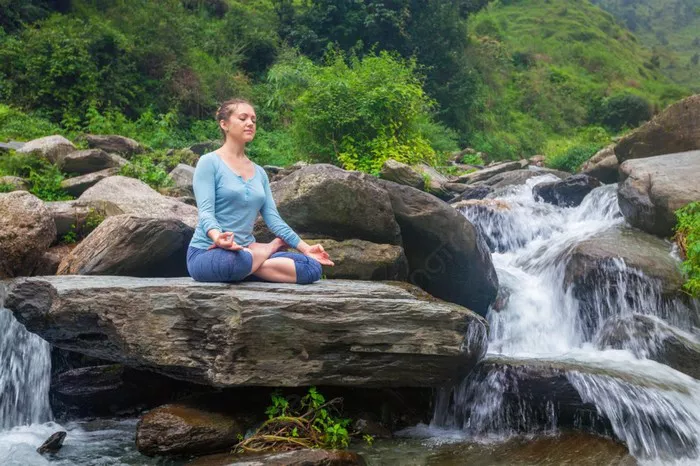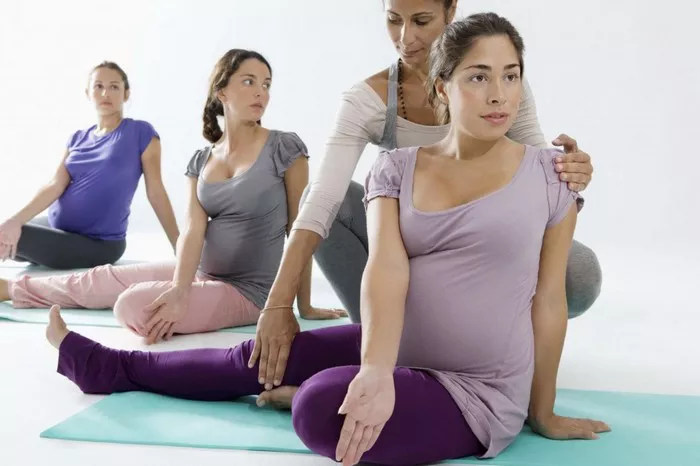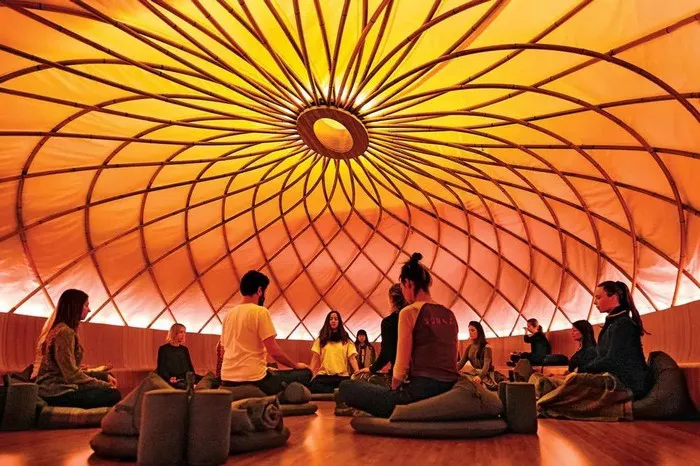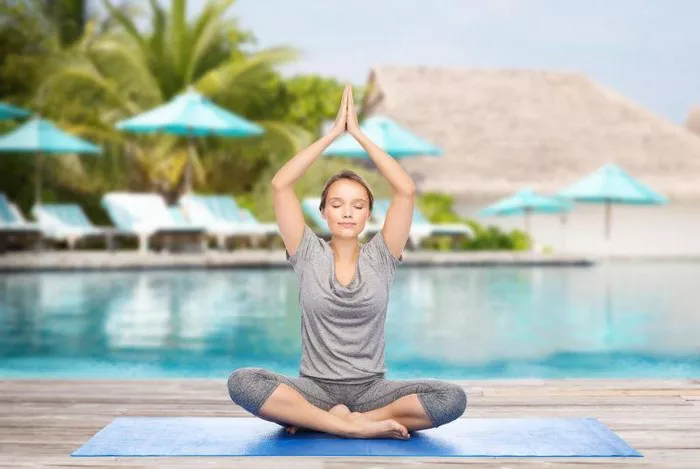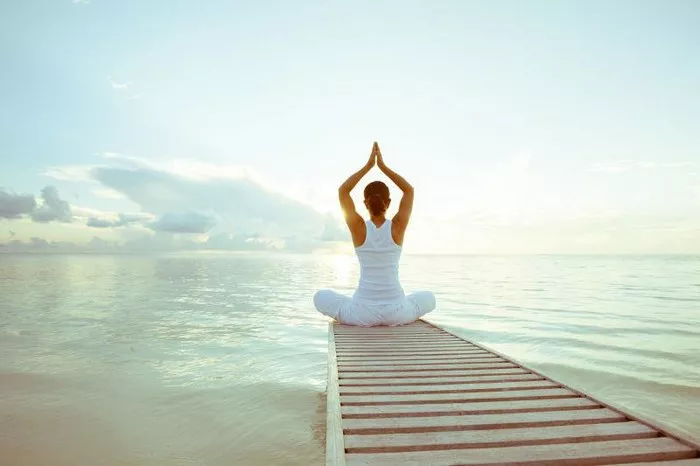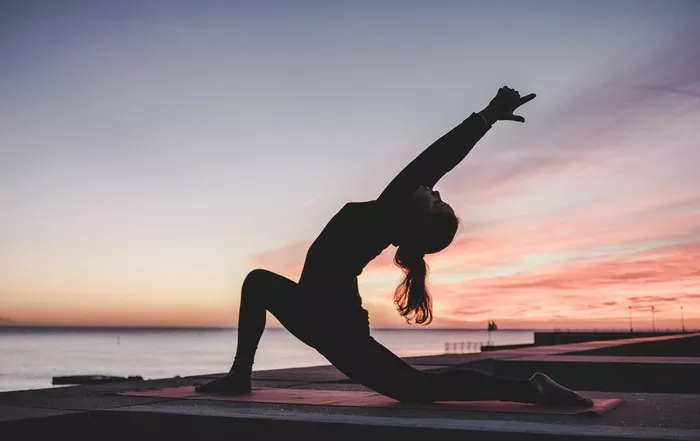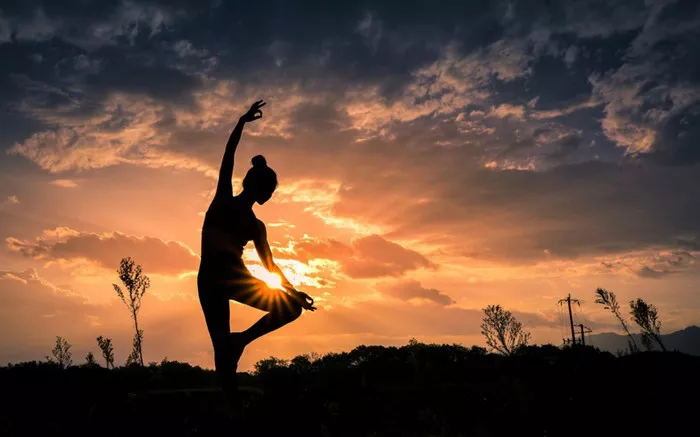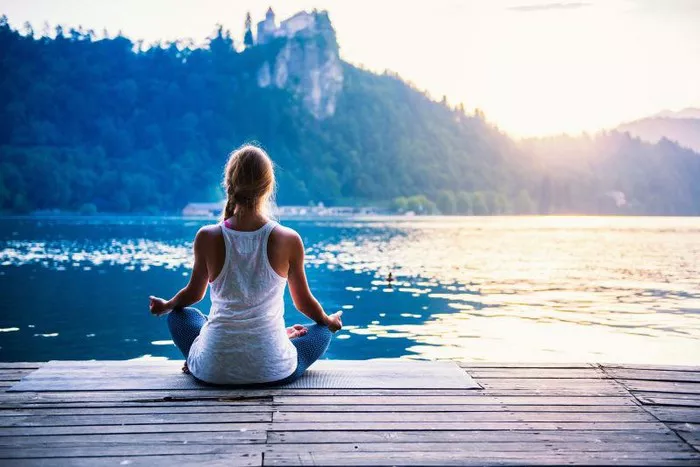Anxiety, characterized by feelings of worry, nervousness, or unease, is something many individuals deal with at some point in their lives. The modern world, with its high-paced lifestyle, work pressures, and constant information flow, has made anxiety a common mental health concern. Fortunately, yoga offers a holistic approach that not only improves physical health but also helps calm the mind, making it an effective tool in managing and alleviating anxiety. In this article, we’ll explore the best types of yoga to relieve anxiety, how yoga helps, and some specific yoga practices that can support emotional and mental well-being.
Understanding Anxiety and Its Impact on the Body
Anxiety often arises from stressors, and when it becomes chronic, it can affect both the mind and the body. Symptoms include feelings of restlessness, excessive worry, difficulty concentrating, rapid heartbeat, muscle tension, and even digestive disturbances. From a physiological perspective, anxiety triggers the body’s “fight or flight” response, releasing stress hormones like adrenaline and cortisol. These hormones are helpful in moments of immediate danger but can be harmful when produced continuously, leading to physical and emotional exhaustion.
Yoga, with its emphasis on breath control, mindful movement, and meditation, provides an antidote to this chronic stress. Regular practice of yoga can help regulate the nervous system, reduce the levels of stress hormones, and promote a state of calm.
How Yoga Works to Combat Anxiety
The primary ways in which yoga helps to reduce anxiety are:
Breathwork (Pranayama): One of the most powerful tools in yoga for reducing anxiety is the practice of pranayama, or breath control. Slow, deep, and rhythmic breathing signals the parasympathetic nervous system, the body’s “rest and digest” mode, which counters the stress response. Techniques like Ujjayi, Nadi Shodhana, and Kapalabhati promote relaxation and mental clarity, soothing the body and mind.
Mindful Movement: Yoga incorporates gentle, deliberate movements that focus on present-moment awareness. When practicing yoga, individuals are encouraged to focus on their breath, body, and posture, which helps divert the mind from anxiety-producing thoughts. The slow, fluid movements also help release built-up tension in the muscles, which is often exacerbated by anxiety.
Meditation and Mindfulness: Yoga is not just about physical postures; it also includes a meditative aspect that calms the nervous system and encourages mindfulness. Regular meditation practice improves emotional regulation, fosters self-awareness, and provides clarity, all of which help reduce anxiety.
Relaxation and Savasana: The final relaxation pose, Savasana, is essential for integrating the benefits of the practice. In this position, the body is still, allowing the nervous system to recalibrate and the mind to settle. This practice reinforces the feeling of peace and relaxation.
Best Yoga Styles for Relieving Anxiety
Different styles of yoga offer distinct benefits when it comes to managing anxiety. While all yoga practices have the potential to alleviate anxiety, some are particularly effective due to their slower pace, emphasis on breath control, and focus on relaxation. Let’s explore these styles in detail:
Hatha Yoga
Hatha Yoga is a classical form of yoga that emphasizes physical postures (asanas) and breath control (pranayama). It is considered one of the most accessible types of yoga for beginners and those looking for a gentle practice. The slower pace and focus on alignment and breath make it highly effective for anxiety relief.
Benefits for Anxiety:
- Slow-paced movements help calm the nervous system.
- Focus on the breath helps bring attention away from anxious thoughts.
- Grounding postures like forward bends and seated poses encourage a sense of stability and relaxation.
Vinyasa Yoga
Vinyasa Yoga involves a series of flowing movements synchronized with the breath. Unlike Hatha Yoga, which may hold poses for a few breaths, Vinyasa flows from one posture to the next. Though faster-paced, Vinyasa offers a mindful approach to movement that requires complete focus on breath and form.
Benefits for Anxiety:
- Dynamic movement can release physical tension and stress.
- Breath-focused flow helps integrate the breath with movement, which brings focus to the present moment.
- Variety of postures helps individuals feel energized yet relaxed after practice.
Restorative Yoga
Restorative Yoga is a gentle, therapeutic style that focuses on deep relaxation. It uses props like blankets, blocks, and bolsters to support the body in passive postures, allowing muscles to relax completely. This practice is designed to restore balance, reduce stress, and promote deep relaxation.
Benefits for Anxiety:
- Deep relaxation triggers the parasympathetic nervous system, promoting calmness.
- Lengthened time in postures allows the mind to quiet down.
- Minimal physical effort makes it suitable for those who may feel too anxious or physically fatigued to engage in more active styles of yoga.
Yin Yoga
Yin Yoga is a slower, meditative practice that targets the connective tissues (like ligaments, joints, and fascia). Poses are held for extended periods—usually 3-5 minutes—to promote deep stretching and encourage the release of emotional and physical tension. This style of yoga is perfect for those who want to slow down and focus on mindfulness.
Benefits for Anxiety:
- Deep stretching releases stored tension in the body, which can alleviate physical symptoms of anxiety.
- Longer-held postures allow for deep mental focus, helping to clear the mind of anxious thoughts.
- Gentle approach promotes relaxation and grounding.
Kundalini Yoga
Kundalini Yoga is a more spiritual practice that combines physical postures, breath control, chanting, and meditation to awaken the “kundalini energy” at the base of the spine. It is designed to bring about a sense of emotional balance and spiritual awakening.
Benefits for Anxiety:
- Breathing exercises and chanting help promote mental clarity and calm.
- Emotional release through movement and sound helps to alleviate mental tension.
- Holistic approach addresses both mental and emotional layers of anxiety, fostering a deeper sense of peace.
Pranayama Yoga
Pranayama is the practice of controlling the breath, and it is integral to almost all yoga practices. However, in Pranayama Yoga, the primary focus is on specific breathing techniques designed to soothe the nervous system and balance energy.
Benefits for Anxiety:
- Slow, controlled breathing activates the parasympathetic nervous system and helps to reduce anxiety levels.
- Breath retention and rhythmic patterns help to center the mind and calm emotional turbulence.
- Increased oxygen flow to the brain and body reduces mental fog and enhances clarity.
Specific Yoga Practices for Anxiety Relief
In addition to the yoga styles mentioned above, there are specific yoga practices and techniques that are particularly effective in alleviating anxiety.
Ujjayi Pranayama (Victorious Breath)
Ujjayi Pranayama is often referred to as “the ocean’s breath” due to its soothing, ocean-like sound. It involves breathing in and out through the nose, while slightly constricting the throat. This creates a gentle, audible sound that helps to calm the mind and bring focus to the breath.
How to practice Ujjayi:
- Inhale deeply through the nose, constricting the back of the throat so that the breath makes a soft sound.
- Exhale slowly through the nose, maintaining the constriction in the throat.
- Practice for 5-10 minutes, focusing on the sound of your breath.
Nadi Shodhana (Alternate Nostril Breathing)
Nadi Shodhana is a powerful pranayama technique that balances the left and right hemispheres of the brain. It involves alternately closing each nostril and breathing through the other, which helps to clear the mind and create a sense of inner balance.
How to practice Nadi Shodhana:
- Sit in a comfortable position.
- Use your right thumb to close your right nostril.
- Inhale deeply through the left nostril.
- Close the left nostril with your right ring finger, and exhale through the right nostril.
- Inhale through the right nostril, then switch and exhale through the left nostril.
- Continue alternating for 5-10 minutes.
Savasana (Corpse Pose)
While simple, Savasana is one of the most effective yoga practices for calming the mind and releasing tension. By lying still and focusing on your breath, you can allow the body and mind to relax deeply, reducing anxiety.
How to practice Savasana:
- Lie flat on your back with your arms by your sides and palms facing upward.
- Close your eyes and take deep, slow breaths.
- Let go of any tension in your body and focus on the sensation of your breath moving in and out.
- Stay in this position for 5-10 minutes.
Conclusion
Yoga is an ancient practice that offers profound benefits for mental health, especially in managing and alleviating anxiety. By incorporating breathwork, mindful movement, and meditation, yoga helps to regulate the nervous system, release tension, and promote emotional balance. Whether you choose Hatha, Vinyasa, Restorative, Yin, Kundalini, or Pranayama Yoga, each practice can provide valuable tools to reduce anxiety and promote a state of calm. By making yoga a regular part of your routine, you can cultivate a sense of inner peace and resilience that supports mental well-being in a world that often feels overwhelming.
The key to finding the best yoga for anxiety is to experiment with different styles and practices to see what resonates most with you. Remember, consistency is crucial, so whether you practice for 10 minutes a day or an hour, the cumulative effect of yoga will gradually help to reduce anxiety and enhance overall emotional and physical well-being.
Related Topics

